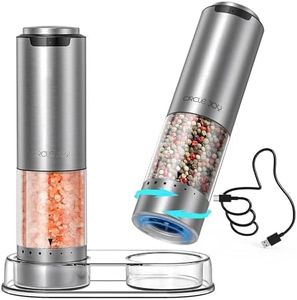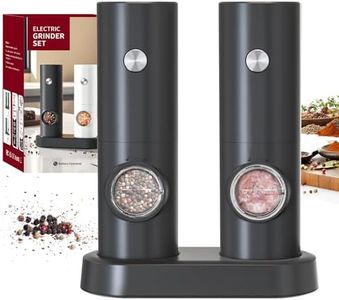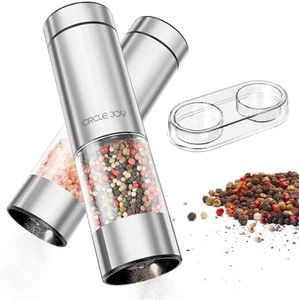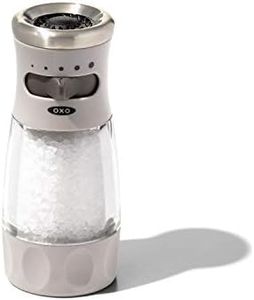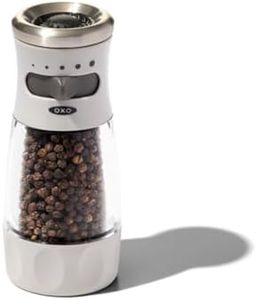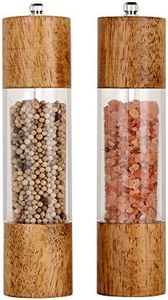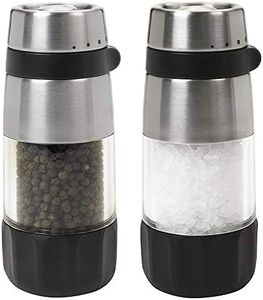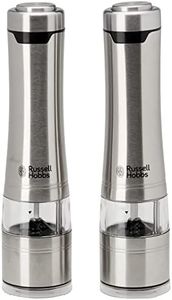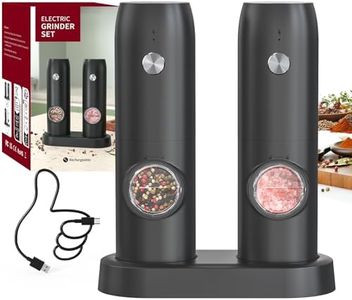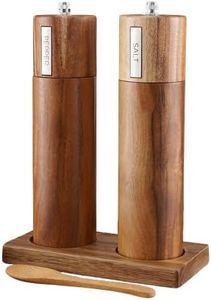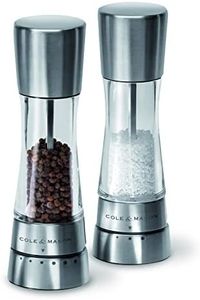We Use CookiesWe use cookies to enhance the security, performance,
functionality and for analytical and promotional activities. By continuing to browse this site you
are agreeing to our privacy policy
10 Best Salt And Pepper Mills
From leading brands and best sellers available on the web.Buying Guide for the Best Salt And Pepper Mills
Choosing the right salt and pepper mill may seem simple, but taking a closer look at key features can make a real difference in your kitchen experience. The ideal mills should match your cooking habits, provide the perfect grind, and fit comfortably in your hand. Think about how you'll use them daily—whether for quick seasoning at the table or heavy-duty grinding while cooking. Consider aesthetics too, as these are objects you’ll probably leave out on display. By understanding the essential features, you’ll end up with mills that not only work well but also fit seamlessly into your routine.Grinding MechanismThe grinding mechanism is the part inside the mill that actually grinds the salt or pepper. This is crucial because it determines the mill's durability and how finely or coarsely your spices are ground. Mechanisms are often made of stainless steel, ceramic, or sometimes even plastic. Stainless steel is common for pepper because it resists corrosion, while ceramic works well for salt since it won’t rust. Plastic mechanisms are usually less durable. If you want something for everyday, long-term use, prioritize mills with ceramic or stainless steel grinders.
Adjustability of Grind SizeAdjustability means your ability to choose how fine or coarse you want your salt or pepper. This is important because different recipes call for different levels of coarseness, and personal taste matters. Some mills offer multiple preset settings or a smooth infinite adjustment. Fine settings are great for soups or dressings, while coarse grinds work well for finishing dishes or steak. Think about what you cook most—if you like flexibility, choose mills that allow easy, precise adjustment.
Material of the Mill BodyThe body of the mill can be made from wood, acrylic, stainless steel, or even glass. The choice affects appearance, durability, and ease of cleaning. Wood gives a classic look and is durable, but can absorb odors if not well-sealed. Acrylic and glass let you see the contents easily and are simple to clean, but they can crack if dropped. Stainless steel is sleek and tough. Pick a material that matches your kitchen style and feels comfortable in your hand.
Refill MechanismThe refill mechanism affects how easy it is to add more salt or pepper. Some mills refill from the top with a screw-off cap, while others have side doors or pull-apart designs. If you use your mills often, opt for one that makes refilling quick and mess-free. Consider also the size of the opening—wider is easier to handle, especially if you have bigger salt crystals or peppercorns.
CapacityCapacity means how much salt or pepper the mill can hold at one time. Smaller mills are easier to handle and store but need more frequent refilling, which is fine for occasional use. Larger mills are better for heavy use or big dinners but can be bulkier. Think about your kitchen space and how often you like to refill—match the capacity to your usage habits.
Ease of Use and GripA mill should feel comfortable in your hand and be easy to turn or press. Designs with ergonomic shapes or non-slip grips work better, especially if you have small or weak hands. Some mills use a twist mechanism, others a push button or crank. Try to picture how you'll use it in the kitchen—will you be using it one-handed while cooking, or at the table? Choose a design that fits your comfort level and physical needs.
